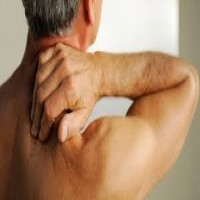Allergic Dermatitis

Allergic dermatitis is one of the most prevalent forms of immunotoxicity resulting from the exposure of the skin to allergens. The presence of the rash or skin lesion at the site of exposure is the initial sign of Allergic Dermatitis.
However, depending on the type of allergen causing it, the rash can ooze, drain, or crust and it can become raw, scaled, or thickened. Also, it is possible that the skin lesion does not take the form of a rash but it may include papules, blisters, vesicles, or even a simple red area.
Ayurvedic Description Of Allergic Dermatitis
In Ayurveda, Dermatitis falls under the category of Kustha Roga (skin diseases). It is believed to occur in all three doshas. As per the fundamentals of Ayurveda, skin is the external structure of the body composed of seven layers. The epidermis and dermis are more vulnerable to the toxins and vitiated doshas transported into the body via Rasa (plasma) and Rakta (blood). This leads to a condition called allergic dermatitis.
Signs & Symptoms
- Rashes
- Blisters
- Vesicles
- Papules
Causes and Risk Factors
1. Allergens: Allergens like Nickel metal, and preservatives like formaldehyde are known to increase the risk of allergic dermatitis.
2. Environmental: Exposure to bacteria and other immune system modulators is important during development and missing out on this exposure increases the risk for allergic dermatitis.
3. Genetics: A number of genes have been found to be associated with allergic dermatitis.
Self Care Tips
- Use mild body washes and always moisturize the skin after bathing.
- Keep away from direct sunlight, and windy climate.
- Avoid junk, packaged foods and keep your diet regulated to avoid any chance of foodborne allergy.
- Wear soft cotton clothes to avoid any friction on the skin.
- Ayurvedic treatment for dermatitis includes detoxification therapies, internal medications, and some diet and lifestyle changes.
Commonly, the symptoms may resolve without treatment in 2 to 4 weeks but specific medication may hasten the healing as long as the trigger is avoided. Also, the condition might become chronic if the allergen is not detected and avoided.






